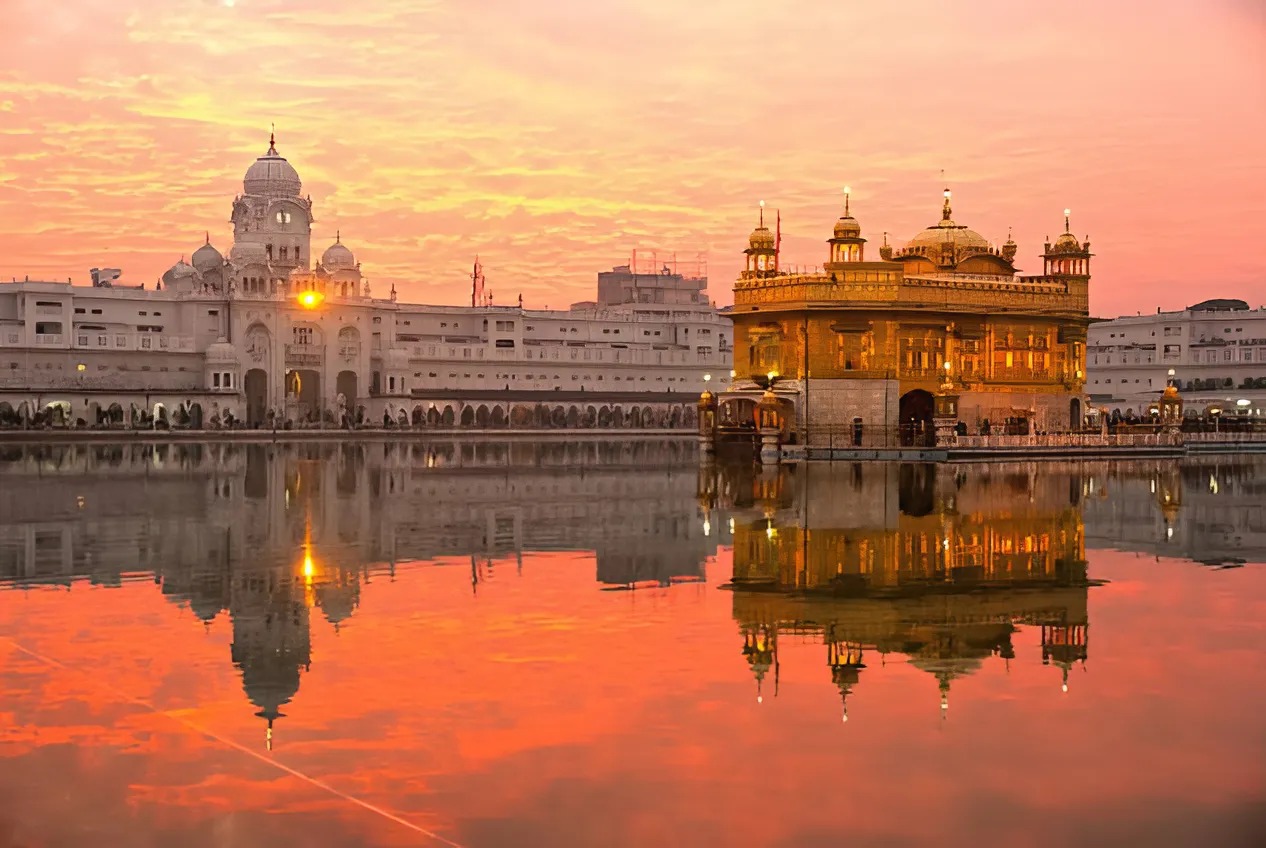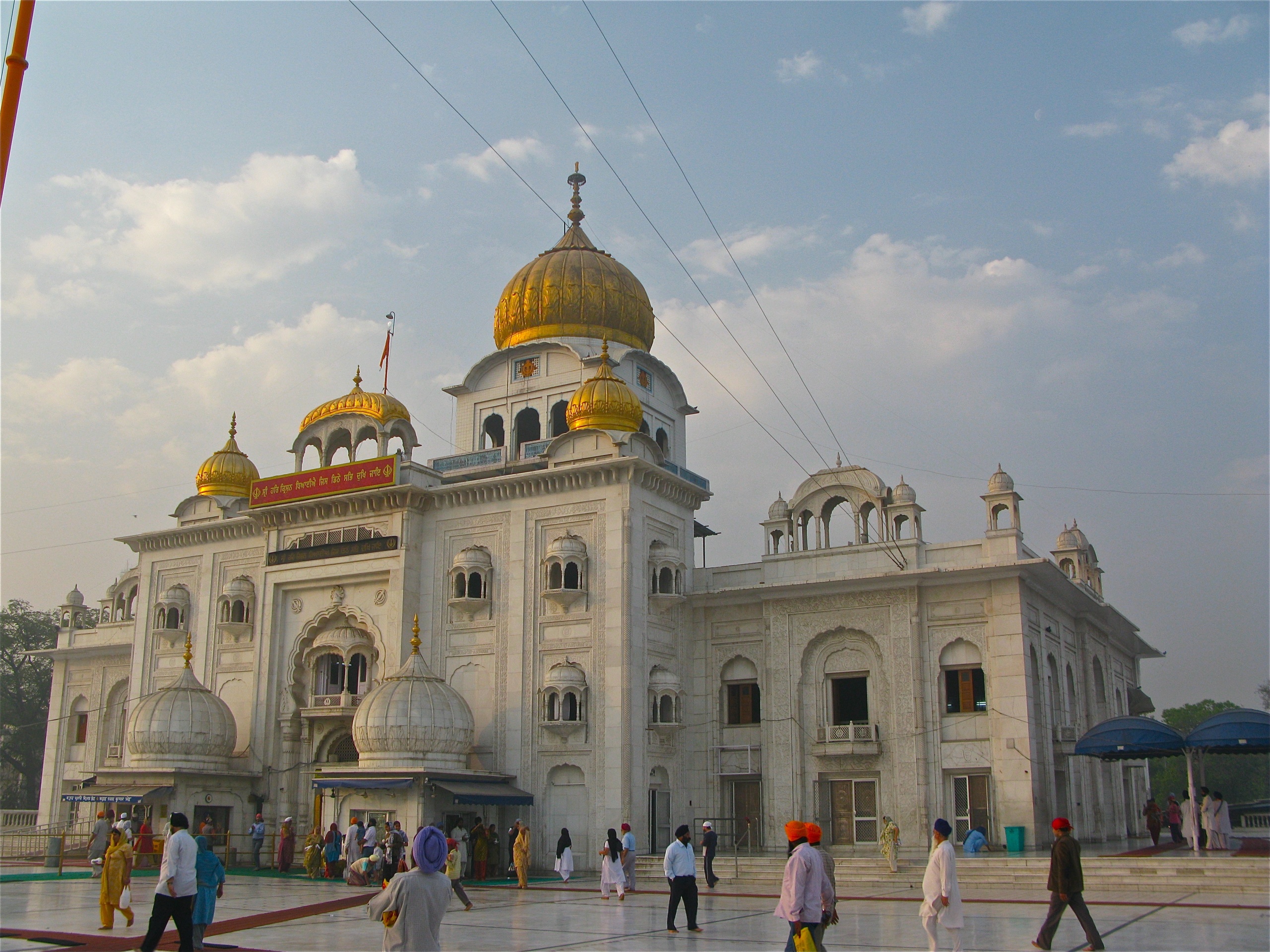India is home to numerous gurdwaras, each with its own unique history and significance. These sacred places of worship not only offer spiritual solace but also stand as symbols of the rich cultural heritage of Sikhism. Here are some of the most prominent gurdwaras in India, along with a brief history and interesting facts about each.

Harmandir Sahib (Golden Temple), Amritsar, Punjab
History: The Harmandir Sahib, popularly known as the Golden Temple, is the most revered gurdwara in Sikhism. It was founded by Guru Ram Das in 1581 and completed by his successor, Guru Arjan, in 1604. The temple’s upper floors were later covered with gold by Maharaja Ranjit Singh in the early 19th century, giving it its iconic appearance¹.
Interesting Facts:
– The temple is surrounded by a large holy tank known as the Amrit Sarovar.
– It has four entrances, symbolizing openness to all people regardless of caste, creed, or religion.
– The temple complex also houses the Akal Takht, the highest seat of earthly authority of the Khalsa.
Gurdwara Bangla Sahib, Delhi
History: Gurdwara Bangla Sahib is one of the most prominent Sikh gurdwaras in Delhi. It was originally a bungalow belonging to Raja Jai Singh, hence the name “Bangla.” The eighth Sikh Guru, Guru Har Krishan, stayed here during his visit to Delhi in 1664. He devoted his time to helping the sick during a smallpox epidemic and eventually succumbed to the disease².
Interesting Facts:
– The gurdwara is known for its beautiful Sarovar (holy pond).
– It offers free meals (langar) to thousands of visitors every day.
– The complex includes a higher secondary school, Baba Baghel Singh Museum, a library, and a hospital.


Gurdwara Sis Ganj Sahib, Delhi
History: This gurdwara marks the site where the ninth Sikh Guru, Guru Tegh Bahadur, was beheaded on the orders of Mughal Emperor Aurangzeb in 1675 for refusing to convert to Islam. The gurdwara was established in 1783 by Baghel Singh³.
Interesting Facts:
– The trunk of the tree under which Guru Tegh Bahadur was executed is preserved within the gurdwara.
– The well where the Guru took his daily bath is also preserved.
Gurdwara Hemkund Sahb, Uttarakhand
History: Gurdwara Hemkund Sahib is situated in the Himalayan ranges at an altitude of 4,632 meters. It is dedicated to Guru Gobind Singh, the tenth Sikh Guru, who is believed to have meditated here in his previous life. The gurdwara was constructed in the mid-20th century⁴.
Interesting Facts:
– It is one of the highest gurdwaras in the world.
– The gurdwara is accessible only during the summer months due to heavy snowfall in winter.
– Pilgrims undertake a challenging trek to reach the shrine.


Gurdwara Patna Sahib, Bihar
History: Gurdwara Patna Sahib, also known as Takht Sri Patna Sahib, is one of the five Takhts (seats of authority) in Sikhism. It was built by Maharaja Ranjit Singh in remembrance of Guru Gobind Singh, who was born here in 1666⁵.
Interesting Facts:
– The gurdwara houses several relics belonging to Guru Gobind Singh, including his cradle, his sacred sword, and a pair of his sandals.
– It is a major pilgrimage site for Sikhs from around the world.
Gurdwara Manikaran Sahib, Himachal Pradesh
History: Located in the Parvati Valley, Gurdwara Manikaran Sahib is associated with Guru Nanak, the founder of Sikhism. According to legend, Guru Nanak performed several miracles here. The gurdwara was built in the 16th century⁶.
Interesting Facts:
– The gurdwara is famous for its hot springs, which are believed to have healing properties.
– The langar (community kitchen) at the gurdwara uses the hot springs for cooking food.


Gurdwara Damdama Sahib, Punjab
History: Gurdwara Damdama Sahib, also known as Takht Sri Damdama Sahib, is one of the five Takhts of Sikhism. It is located in Talwandi Sabo and is where Guru Gobind Singh compiled the final edition of the Guru Granth Sahib in 1705.
Interesting Facts:
– The name “Damdama” means “breathing place,” signifying a place of rest.
– The gurdwara complex includes several historical buildings and a large Sarovar.
Gurdwara Rakab Ganj Sahib, Delhi
History: This gurdwara marks the site where the body of Guru Tegh Bahadur was cremated after his execution in 1675. The gurdwara was built in 1783 by Baghel Singh.
Interesting Facts:
– The gurdwara is located near the Parliament House in Delhi.
– It features a beautiful white marble structure and a large Sarovar.


Gurdwara Anandpur Sahib, Punjab
History: Gurdwara Anandpur Sahib is one of the most important Sikh shrines. It was founded by Guru Tegh Bahadur in 1665 and later became the birthplace of the Khalsa in 1699 under Guru Gobind Singh.
Interesting Facts:
– The gurdwara complex includes several smaller gurdwaras, each with its own historical significance.
– The annual Hola Mohalla festival, a major Sikh event, is celebrated here with great fervor.
Gurdwara Fatehgarh Sahib, Punjab
History: Gurdwara Fatehgarh Sahib commemorates the martyrdom of the younger sons of Guru Gobind Singh, who were bricked alive by the Mughal governor of Sirhind in 1705.
Interesting Facts:
– The gurdwara complex includes several memorials dedicated to the martyrs.
– An annual fair is held here in December to honor their sacrifice.
These gurdwaras not only serve as places of worship but also as reminders of the rich history and enduring spirit of Sikhism. Each gurdwara has its own unique story and continues to inspire millions of devotees around the world.


